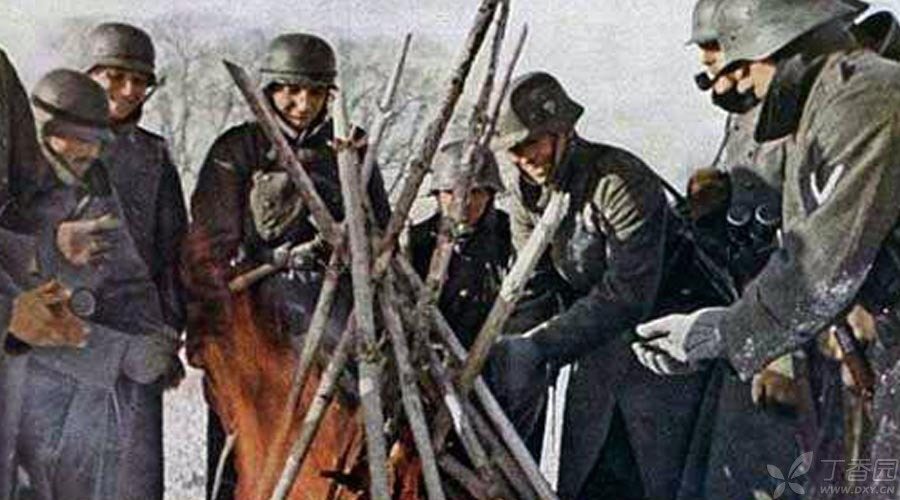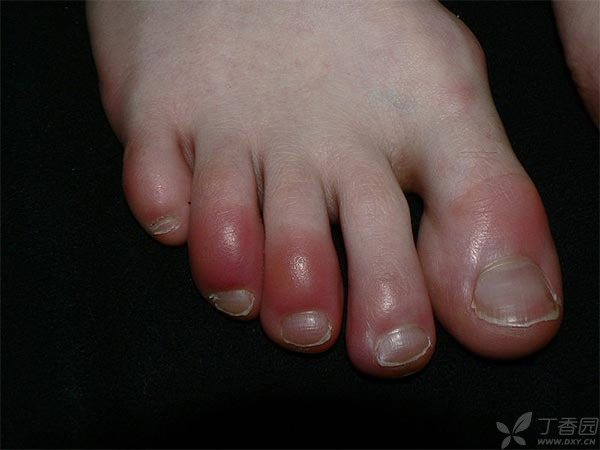
14 January 1941, Paris, France
Under the attack of Hitler’s Blitzkrieg, France had already fallen and was forced to surrender and ceded half of its territory to Germany. Among them, Paris was included.
At this time, Paris was a place where artists gathered, but the arrival of Germany forced them to end their creation. However, some people persevered in resistance, such as Picasso. Although he was no longer able to paint at this time, he still tried to maintain his inspiration for art in other fields.
On this long and cold night, he found an old exercise book and wrote down the poem drama “Desire to be Fooled by Tail”.
It must be admitted that although the script inherits his consistent absurd thoughts, his skill in writing is obviously not as good as his talent in painting. The script is quite boring. For example, in order to express his feeling for the cold, the theme song of the whole play has only one word:
[My chilblain, my chilblain, my chilblain…]
In those war years when fuel was extremely precious, chilblain almost became a nightmare comparable to plague and cholera.
Less than half a year after Picasso finished writing this lame poem, the Germans marched eastward and the torrent of steel was aimed at the Soviet Union, the last opponent to conquer the European continent.
But Hitler would not have thought that this was the beginning of the dynasty and the starting point of its downfall.
In the hot summer, if the German army easily entered the hinterland of the Soviet Union like a hot sharp knife piercing cheese, the Soviet Red Army fought hard and slowed down the German attack to the death, just waiting for its strongest reinforcements.
This support army is called cold. 130 years ago, it was it that blocked Napoleon, another Europa overlord.
After Hitler’s dream of celebrating Christmas in Moscow was shattered, as the temperature dropped sharply, the Germans gradually began to show various symptoms.
Their faces, auricles and fingers all showed dark purplish red congestion edema and erythema, but they no longer felt it. Even if they felt it, their skin was cold and cold.
What is even more frightening is that their boots are designed for the warm weather in Western Europe and cannot protect their feet under the ice and snow in the Soviet Union.
In Moscow alone, nearly 100,000 German troops lost their fighting capacity due to the cold, and the non-combat attrition of these precious troops finally kicked off Stalingrad’s counterattack victory.

Figure Toe Chilblain
As the name implies, chilblain is a skin disease caused by cold.
The reason why our skin can maintain a temperature above 30 ℃ in winter is due to the regulation of body temperature by the brain center. The way the body regulates body temperature in low temperature is mainly the blood flow changes caused by vasodilation and contraction of blood vessels.
When the skin is directly exposed to low temperatures below zero, blood vessels will contract violently, which will cause severe ischemia of the local skin. The blood supply to the tip of the nose, auricle, fingers and toes is already small, and the impact of the sharp contraction of blood vessels will be greater. These parts of the blood congestion will turn purplish red.
Over time, the water in local skin cells will form ice crystals. The more water forms ice, the higher the concentration of the liquid environment in which the cells are located, and the water in the cells will be continuously sucked out, causing the local cell population to lose water and die. This part of the skin will be destroyed, pale in color, cold to the touch, numb and painful.
If you were lucky enough not to freeze to death, Even more frightening things happen when people return to an environment where the temperature is zero. The melting of ice crystals is accompanied by skin necrosis. Local skin will become red, hot, itchy or painful at the same time. If frostbitten skin is very deep, blisters will appear and the skin feeling will even disappear. If even the inner muscles and even bones are frostbitten, the skin will gradually turn black and dry.
If the range of skin necrosis is very large, severe inflammatory reaction will also cause serious systemic symptoms, such as shock.
The most easily affected part of chilblain is the feet, especially the toes.
During the war, frostbite on the toes often means that the combat capability of individual soldiers has been greatly reduced or even completely lost its combat effectiveness. Not only in Germany, but also in China during the War to Resist U.S. Aggression and Aid Korea, more than 97% of frostbite and attrition were caused by lower limb frostbite. Even, there have been tragedies in which troops responsible for ambushing deserters were all frozen to death because the ambush time was too long.
In addition to cold, another major cause of chilblain is humidity.
In 1915, the First World War was in full swing and Turkey’s Ottoman Empire was on the verge of collapse, but its defense of Asia and Europe was a battleground for military strategists.
At the call of the British Navy Secretary, the Anglo-French Allied Forces began landing operations in the Daniil Strait in April.
However, Turkey was not easy either. Under the command of German General von Zanders, they carried out desperate resistance.
Half a year’s war of attrition killed the troops and morale of both sides. Between fighting and not fighting, the time came to November.
God began to show his majesty, from heavy rain to sleet to snowstorm.
Under the extremely humid environment, countless British troops suffered frostbite and lost their combat effectiveness, which also directly led to the final withdrawal of the British troops on December 19. History calls it the Battle of Garipoli.
The final result of the snowstorm was that the navy minister who led the battle was removed from the cabinet and thrown into France to serve.
The name of the Secretary of the Navy was Winston Churchill.
History has turned around at this moment.
Prevention of chilblain is not difficult.
We were born in a peaceful era and can avoid these extreme situations to the greatest extent. However, chilblain still appears around us from time to time. In winter, chilblain is very common in the humid and cold south of our country.
You may wonder, it is not the wartime Soviet Union, how can zero temperature cause chilblain?
In fact, chilblain, which occurs on the cold Soviet battlefield and can cause skin necrosis, is medically called [frozen chilblain], while chilblain, which is common in wet and cold southern China, is called [non-frozen chilblain].
When our skin is exposed to cold and humid conditions for a long time, Even if the temperature is above zero degrees Celsius, Blood vessels under the skin are also prone to continuous contraction due to cold, Causing local blood circulation stagnation. A large amount of blood is deposited under the skin, arterial blood with more oxygen cannot pass through, venous blood with less oxygen cannot pass out, and local skin will be in a state of anoxia for a long time. This will lead to a decrease in the skin’s ability to regulate temperature, even small blood vessels occlusion and necrosis, local skin ulcers, thus forming chilblain.
In fact, the prevention method is also very simple, nothing more than three points:
1. To keep warm, you should know that the killer of Soviet troops in their local operations is wool boots and thick felt socks. Don’t be too bloated in winter, and you don’t need to show your thighs all the time. Wrap them tightly when you should. But don’t wear too tight clothes and socks to affect blood circulation.
2. Keep your limbs dry, especially in rainy and snowy days. Wear waterproof shoes to prevent your toes from soaking in water for a long time.
3. Exercise and strengthen your physique.
Although prevention is not difficult, treatment is a big problem.
The treatment of chilblain, especially recurrent chilblain, has always been a category of [strange and difficult diseases], and there is still no very clear treatment plan.
The first thing to be clear is that don’t soak in hot water immediately after chilblain occurs to avoid scalding. Instead, warm water (about 40 ℃, hands don’t feel hot) should be used. After soaking, secondary damage should be avoided from being exposed to cold and humid environment again, and warm air (such as rooms with air conditioning and heating) should be kept as much as possible.
For patients with recurrent chilblain, vasodilators, such as nicotinic acid and nifedipine, can be used to dilate arteries and relieve symptoms of blood deposition and stagnation.
However, local treatment should also follow the methods of anti-inflammation, detumescence and circulation promotion. There are many different brands of chilblain ointment on the market, but the effects of such products vary from person to person. Anisodamine also has certain curative effects.
In today’s relatively peaceful era, the enemy of cold cannot be underestimated. Every winter, the army in the plateau and northern regions of our country will carry out cold resistance training to ensure that the body can still have sufficient temperature adjustment ability under extreme conditions.
Chilblain has also become a routine examination item during military recruitment.
In the World War II movie “The Day of Landing”, the Japanese Kwantung Army, which was held in a Siberian concentration camp, was executed if it was found to have chilblain. It was also in the cold winter in Siberia that 60,000 of the 500,000 Kwantung Army prisoners died here.
Not far away, heavy snow was still flying in Stalingrad and Moscow. Stalin was laughing at Churchill, who had become British Prime Minister.
Turkey still stood with Germany in World War II, but eventually defected in Germany. Finally, it joined NATO soon and became one of the younger brothers of Britain and the United States.
It seems that no one remembers the snowstorm in 1951.
However, countless of our forefathers are still buried in the land for which they fought in the distance and have solidified into immortal monuments in the cold wind of North Korea.
Editor: Ding Ruoshui
Author: Mo Ran
